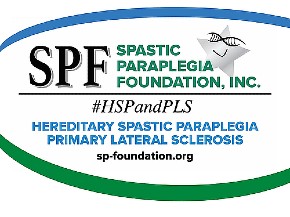Heather Rendulic yearns to use both hands to fill up her plate at a hotel buffet, or slice up her own steak. She wants to pull her hair into a ponytail. She’s tried to teach her husband, but it always comes out a bit messy.
Almost nine years after a stroke paralyzed the left side of her body at age 23, Rendulic sat in a lab at the University of Pittsburgh and used her left hand to cut a steak. Aided by a spinal cord stimulation implant developed by Pittsburgh and Carnegie Mellon researchers, she fed herself nuggets from Chick-fil-A, and used her left hand to draw a picture she described as “not half bad.”
“It’s a surreal feeling,” Rendulic said. “It felt like my brain could connect to my left arm and hand again.”
Rendulic is one of two participants in a study, published Monday in Nature Medicine, which showed that stimulating the top part of the spine improves arm and hand movement in post-stroke patients. Spinal cord stimulation has long been used as treatment for chronic pain, and in recent years has been studied as a therapy for patients paralyzed by spinal cord injuries. This is the first time the device has been used to help post-stroke patients, and one of just a few studies that has focused on arm and hand function. The neurons that control movement in the leg have historically proved an easier target, because they are more independent than those in the arm, which rely heavily on instructions from brain cells.
A stroke weakens the connection between brain cells and spinal circuits, but it doesn’t sever it completely. The researchers wanted to know what would happen if they used technology to exploit whatever was left of that connection. Instead of using electrical stimulation to force muscles into submission, the team stimulated sensory inputs to give patients control over their movements.
“These people can kind of still move their arm, but not functionally,” said Marco Capogrosso, the director of the Spinal Cord Stimulation Laboratory at the University of Pittsburgh and lead author on the paper. “The idea was, let’s leverage what is existing there and instead of stimulating the muscle, try to amplify these circuits.”
The researchers had previously tested this theory in paralyzed monkeys and with computer modeling. In 2021, they launched a trial of the device in two women who had suffered strokes years earlier. They implanted two spinal cord stimulation electrodes, resembling strands of spaghetti, in the space between the bone and the spinal cord. The team hooked the two participants up to an external stimulator, and then used a keyboard-like machine to test the electrodes on different portions of the spinal cord. They tested the stimulation five days a week, for four hours a day.
Both participants demonstrated stronger, more extensive movement with the stimulation on, and were able to complete functional tasks like grasping a soup can. They could move their arms more fully by the fourth week of the study, even without the stimulation.
“At the end of the four weeks, we could already see an improvement even when the stimulator was off, proving that we can really have a long-term effect,” said Elvira Pirondini, a neuroengineer at the University of Pittsburgh and author on the paper. This result was unexpected, as the researchers tested the device for its ability to assist with — not cure — motion weakness. Rendulic said she felt no uncomfortable side effects from the device; just a vibrating sensation in her arm.
Rendulic ultimately regained the ability to walk and make limited arm motions a couple of years after her stroke, but she hadn’t been able to use her left arm for everyday tasks. She tried every post-stroke treatment available: physical therapy, occupational therapy, external electrical stimulation, acupuncture, massage, and more.
“This is the only thing that worked, out of everything that I tried,” Rendulic said. At this point, however, most of the arm strength she gained from the stimulation is gone.
Walter Koroshetz, director at the neurological disorders and stroke division at the National Institutes of Health, said the next steps in the research will be to identify which patients benefit most from this technology, and study how combining stimulation with physical therapy might magnify the effects and make them last longer. The study was funded in part by the NIH’s BRAIN Initiative, which Koroshetz helps oversee.
“The patients had deficits that lasted years, and then with the stimulation they saw almost immediate effects,” Koroshetz said. “The hope is that with physical therapy, those would be super enhanced.”
Eellan Sivanesan, director of neuromodulation in the pain medicine division at Johns Hopkins School of Medicine, said the results are an exciting sign of the growing potential for spinal cord stimulation. He emphasized the need for further clinical evidence in a larger patient population — work that will take years to conduct.
The pace of that research can be painful for patients, he said. After media buzz around electrical stimulation restoring movement in people with spinal cord injuries, Sivanesan had to let down many patients who asked for an implant to help them walk again.
“This is for research purposes, it’s very early,” Sivanesan said. “There’s promise. It’s good to have hope, but I don’t want to mislead patients that this is something that’s going to be available for them tomorrow.”
Capogrosso and his team are already preparing for the possibility of bringing the device to market, though. Douglas Weber, a bioengineer at Carnegie Mellon and author on the study, founded the startup Reach Neuro in November 2021 to start that work. The startup joins a large and growing neuromodulation industry, with major players like Abbott, Boston Scientific, Nevro, and Medtronic battling it out to market to patients with chronic pain. Weber said the team met with Medtronic and others to gauge interest in the technology, but had no takers.
“There’s a lot of inertia in those companies and they are reluctant to sort of get distracted or to move out of their swim lane,” Weber said. “They’re probably going to read our paper with great interest, but I think they will wait for us or others in the community to demonstrate the feasibility and the potential.”
In 1989, the Food and Drug Administration deemed spinal cord stimulators safe for use in patients suffering from chronic pain. There are still risks, though: Many newer spinal cord devices, relying on their predecessors, have not undergone clinical testing and can sometimes cause serious complications in patients, as the Associated Press reported in 2018. Still, the Reach Neuro team will benefit from the FDA’s familiarity with the device.
The NIH funding will help them collect more evidence, enrolling more participants for a longer period of time. Ultimately, they will implant the stimulators, rather than relying on the external one, so they can study the effects over years without requiring patients to come into the lab. Like many startups with novel technology, a major hurdle will be convincing Medicare and other insurers to reimburse the treatment.
“While we’re excited about the Nature paper, that paper is not going to help the 400,000 patients a year that are going to experience a stroke and have chronic paralysis because of that,” Weber said.
Rendulic is eager to test out the device long-term, particularly in conjunction with physical therapy exercises at home. “I’ll be first in line for anything,” she said. Rendulic often describes herself as living “one-handed in a two-handed world.” Ten years in, she’s used to it. But she’s ready to have both hands back.













